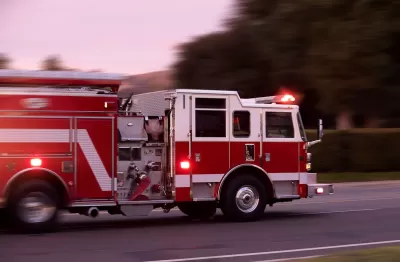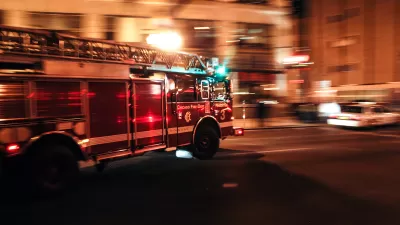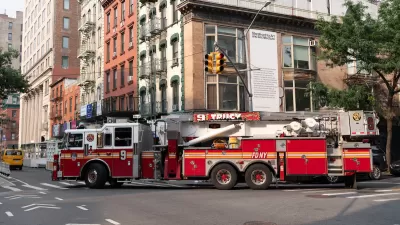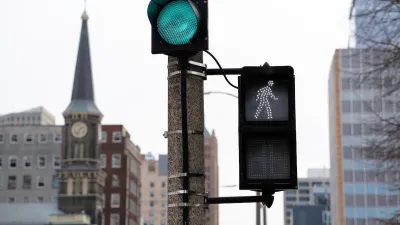Despite common concerns that narrower traffic lanes and bike infrastructure can slow emergency response, response times in one study didn’t change.

A study that sought to quantify the impact of road diets on emergency response times found that “there was virtually no difference in emergency response travel time (in min/km) after a road conversion compared to before, both in total and when they looked at specific road diets.”
As Jonathan M. Gitlin explains in Ars Technica, a research team from the University of Iowa surveyed first responders. Roughly half of the first responders surveyed believed there was no change in response time, while a third believed response times slowed down and 16 percent thought response times became faster.
The team then looked at specific response times from three fire districts in Cedar Rapids, Iowa where road diets were installed, finding no change in response times. The study is an important part of the debate over traffic calming tools such as lane width reduction, which has been shown to improve traffic safety — thus also reducing the need for emergency response to traffic crashes.
FULL STORY: Bike lanes and narrowed streets don’t slow emergency vehicles

Study: Maui’s Plan to Convert Vacation Rentals to Long-Term Housing Could Cause Nearly $1 Billion Economic Loss
The plan would reduce visitor accommodation by 25,% resulting in 1,900 jobs lost.

North Texas Transit Leaders Tout Benefits of TOD for Growing Region
At a summit focused on transit-oriented development, policymakers discussed how North Texas’ expanded light rail system can serve as a tool for economic growth.

Why Should We Subsidize Public Transportation?
Many public transit agencies face financial stress due to rising costs, declining fare revenue, and declining subsidies. Transit advocates must provide a strong business case for increasing public transit funding.

How to Make US Trains Faster
Changes to boarding platforms and a switch to electric trains could improve U.S. passenger rail service without the added cost of high-speed rail.

Columbia’s Revitalized ‘Loop’ Is a Hub for Local Entrepreneurs
A focus on small businesses is helping a commercial corridor in Columbia, Missouri thrive.

Invasive Insect Threatens Minnesota’s Ash Forests
The Emerald Ash Borer is a rapidly spreading invasive pest threatening Minnesota’s ash trees, and homeowners are encouraged to plant diverse replacement species, avoid moving ash firewood, and monitor for signs of infestation.
Urban Design for Planners 1: Software Tools
This six-course series explores essential urban design concepts using open source software and equips planners with the tools they need to participate fully in the urban design process.
Planning for Universal Design
Learn the tools for implementing Universal Design in planning regulations.
Ascent Environmental
Borough of Carlisle
Institute for Housing and Urban Development Studies (IHS)
City of Grandview
Harvard GSD Executive Education
Toledo-Lucas County Plan Commissions
Salt Lake City
NYU Wagner Graduate School of Public Service





























